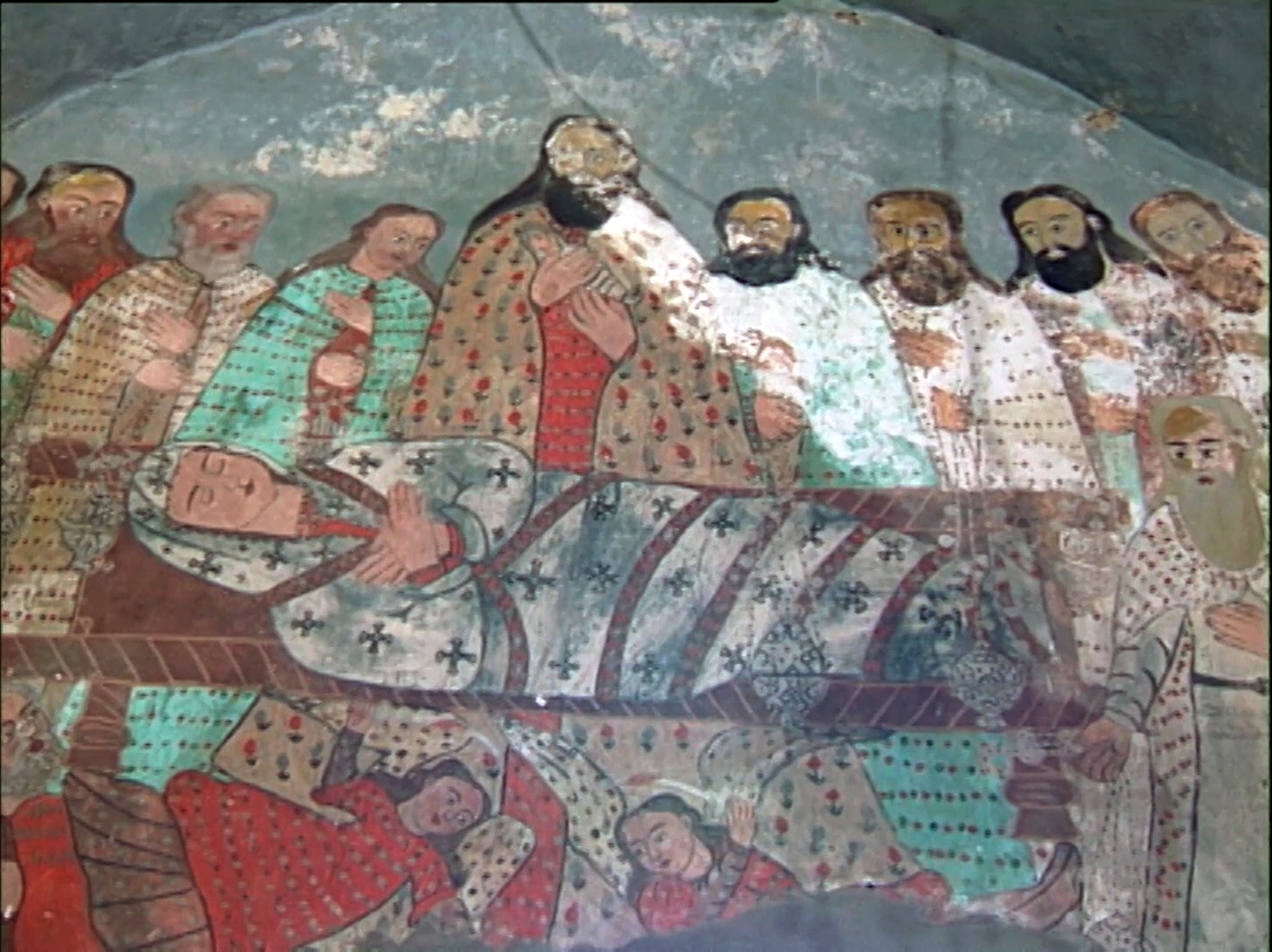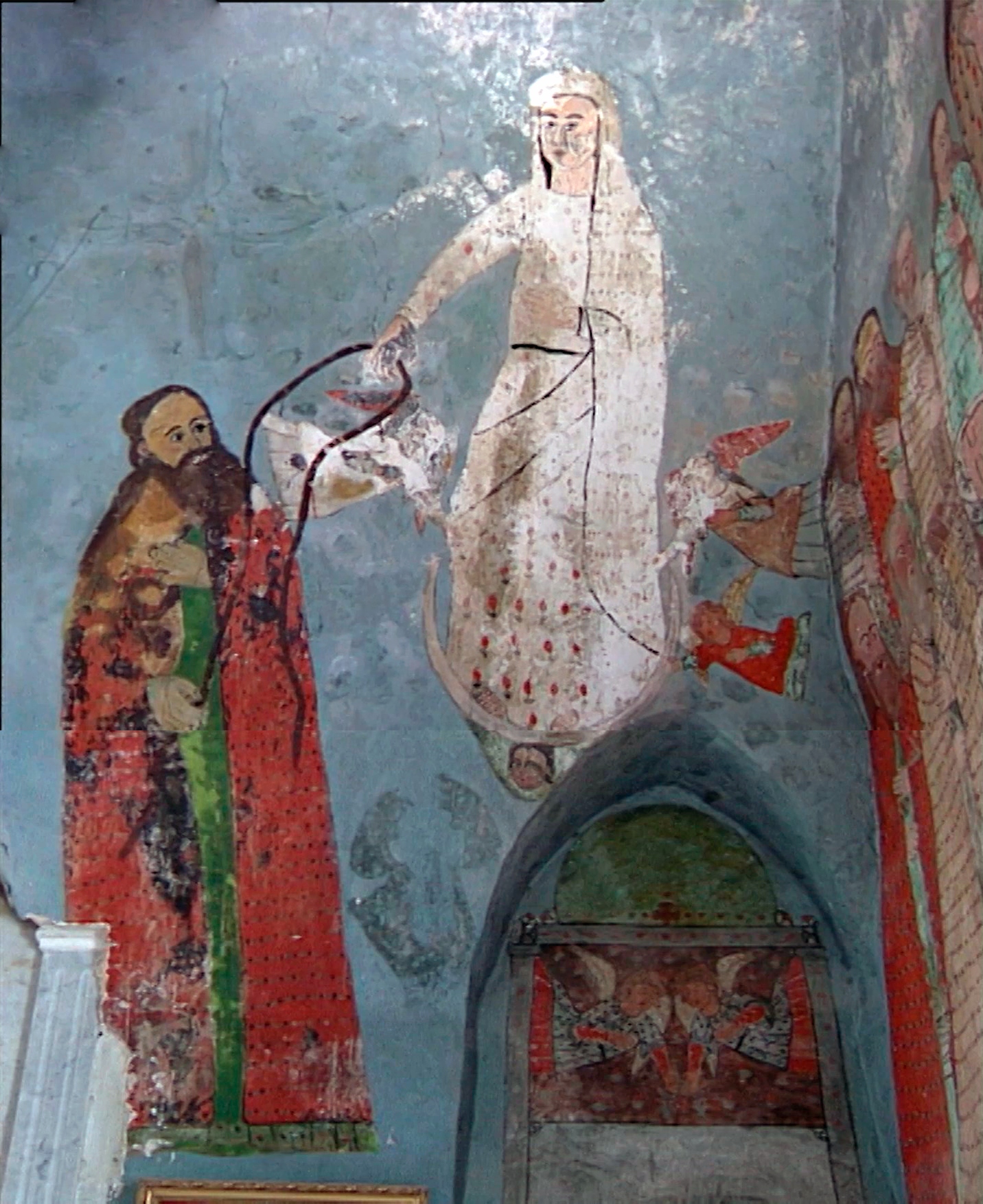Saint Mary of the Holy Belt Cathedral
The story of a sensational archaeological finding (Roman era) in the city of Homs, told by the Father of the Umm Al-Zunnar Temple, Priest Youhann Salameh.
Here is the story in brief:
1953, the city of Homs in Central Syria. Here, during the restoration of the local church, archaeologists, with the participation of Patriarch Abraham I, made a sensational discovery — found a secret place, which was a stone mortar, and a metal case with a woman’s belt of woolen threads embroidered with silver in it. These are unique artifacts of the ancient Roman era.
Based on the ancient written sources¹ discovered earlier, clergymen and experts from the Department of Antiquities, headed by Dr.George Saliba, determined that the finding, a belt, most likely belonged to the Blessed Virgin Mary.
LOCATIONS:
MEDIA CONTENT:
— Streets of the city of Homs, theming sketches of its citizens;
— The exterior of the Church of Saint Virgin Mary, the monument of Youssef Barbaaskar in the holy courtyard;
— black and white photographs showing the process of uncovering the secret place in 1953 (Antiquities Department experts, led by Dr.George Saliba, examined the artifacts found: a stone stupa with a black basalt lid² under which there was a vessel with a belt made of silver and cotton threads and a photograph of Patriarch Abraham I showing the belt to the faithful);
— a display case with the Belt of Saint Virgin Mary and artifacts after the restoration work;
— holy well for sprinkling the faithful;
— reportage video-recording of the solemn service during the celebration of the Assumption of the Blessed Virgin Mary (August 15).
Since then, the local Christians in the city of Homs have had two holidays: one dedicated to the discovery of the belt and the other to the feast of the Assumption of the Blessed Virgin Mary (August 15). On this day, the belt is taken out of the church for public viewing and prayer by the parishioners of the church.
We have video recordings of the live speech (with a translation of Arabic into Russian and English) of Priest Youhann Salameh, which you may access by contacting us


The story of the archaeological finding in the city of Homs continued in the Biblical city of Sadad, an ancient Christian city on the border of the desert where, in one of the local temples, a wall painting displaying the passing of the belt to the Apostle Thomas was preserved.
Sadad, on the edge of the Phoenician lands, is about 4,000 years old. It is probably Sadad that is mentioned in the Old Testament (Numbers 34:8; Ezekiel 47:15) as the northeastern border of the land of Canaan, under the name Zedad.
Sadad is also connected historically with Mar Musa, for both are ancient centers of the Jacobite orthodox church. The church of Sadad also preserves manuscripts written at Mar Musa. The wall paintings in Sadad are from the time of Metropolitan Saroukhan, who was Father of Mar Musa about 200 years ago and lived for a long time in Sadad.
… So, when the Blessed Virgin Mary passed away, all the apostles gathered in Jerusalem to see her off to her last journey. All except Thomas, who was three days late. When, together with Peter and John, Thomas came to the tomb of the Mary, they saw her appear in heaven. Thomas asked for something to give him as a proof of the holy vision.
Saint Mary gave him her holy belt.
This event is displayed in naive 17th-century frescoes in the city’s Christian church of St. George.
Priest Abu-Addulah will comment on a local artistic reading of famous biblical scenes: the scene of the Assumption of the Virgin Mary, the Virgin Mary handing the belt to St. Thomas.
LOCATION:
MEDIA CONTENT:
Frescoes displaying the «vision of the Apostle Thomas,» showing the moment when the Virgin Mary is handing him the belt over.
¹ Excerpt from the report of the patriarch with the circumstances of the discovery of the Belt of the Virgin Mary in the church of Homs. The manuscripts and other documents were preserved and classified by the priest of Homs, Father Joseph Askar. After his death in 1916, they were given as a gift to the Syrian Patriarchal Orthodox Library
² «stupa» with a lid of black basalt stone that housed the belt, which protected the belt from external climatic influences. The city of Homs was famous for black basalt products, so it was called the «mother of black stones».
Download a synopsis of the video content at the link, the full release of the video may be available by contacting us